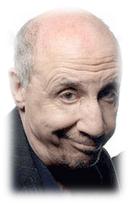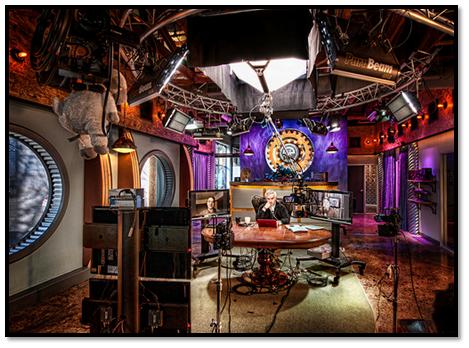Recently, we talked about Yahoo’s new policy to keep employees in the building when they banned telecommuting.
But today, I want to potentially anger my friends and clients behind the mic by exhorting you to get out of the studio and put yourself in front of the people you serve and entertain.
Why?
Because it is essential for radio to not just do what it’s always done. To gain and capture attention and loyalty in this environment, there’s an ongoing need to make an impression, to have impact, to do something different, to shine.
And you do that by creating experiences that people will talk about.
Your fans have heard your show. They know how “War of the Roses” works. They’ve tried to be caller 10. And they’ve even liked you on Facebook.
But as every other corner of the entertainment strives to come up with what’s next and what’s new, radio continues to believe that dogged consistency is the road to habitual listening and healthier brands. It’s not.
We know that TV and other media have made serious inroads, especially during the morning drive hours. From national shows like Good Morning America and Morning Joe to all those locally hosted morning shows that extensively cover weather, traffic, showbiz, and new happenings from your hometown, TV is working hard to erode the morning radio audience.
So you fight back. And one way you do that is by giving the audience something different – something they’ll want to talk about when they get to work.
If you conduct focus groups on an ongoing basis like I do and you listen carefully, you’ll hear the signs that should stimulate thinking about the usual in unusual ways. In much the same way a football fanatic or a Stones fan now want enriched experiences – going backstage, sitting on the bench, meeting the band – radio listeners talk about how they’re interested in doing and seeing things that may sound pretty mundane to you – but, in fact, they are part of the behind-the-scenes environment that fans crave.
Reinventing a morning show may have less to do these days with creating a new benchmark bit or even a new station event. It may have everything to do with letting fans behind the velvet ropes and allowing them to see a side of your show they’ve not been able to experience before.
 I think back to watching Alex Bennett (pictured) do mornings at Live 105 with a come-and-go audience in front of the studio window. Bennett did it every day, with a simple card chair setup, a coffee machine, and donuts. It was an experience, watching a radio show happen live with you in the same room.
I think back to watching Alex Bennett (pictured) do mornings at Live 105 with a come-and-go audience in front of the studio window. Bennett did it every day, with a simple card chair setup, a coffee machine, and donuts. It was an experience, watching a radio show happen live with you in the same room.
Other shows take the team on the road now and again, giving the audience a chance to meet the cast and watch radio being made right before their very eyes. Now I know the downsides – because I’ve been known to mention them myself in planning meetings. Remote shows from a venue, fundraiser, landmark, or anywhere outside of the friendly confines of the studio can be expensive, staff-intensive, and even ratings-unfriendly if the show plays to the crowd and neglects the larger cume listening at home and in their cars.
But the upside is engagement – not the kind you strive for on Facebook – but the type that only happens when listeners meet the hosts, DJs, the producer, and the traffic guy.
Here’s another angle – video. And now I know that every morning person will hate what’s coming next. But Don Imus proved it with his MSNBC shows – consumers love to watch radio being made daily.
YOU may think it’s boring, but to fans, it’s a window into the world of radio. It’s like a camera on the Niners bench or in the Red Sox clubhouse. It’s being able to listen in as Phil Mickelson talks strategy – or anything else – with his caddy. It’s hearing what really goes on in a Peyton Manning huddle.
Perhaps we all have Reality TV to thank, but today, fans want to go inside the sausage factory. If you don’t believe me, just ask them.
Now of course this requires that you look presentable at 6 am – not an easy task, to be sure. But it also means that you’re willing to open up your world to your audience – a trend that may have started with Reality TV, but now permeates pop culture – except in radio.
Leo Laporte (pictured below) knows this only too well. Four years ago at our Summit in Austin, Leo was one of our featured speakers. He is known as “The Tech Guy” for good reason. Leo has consistently been way out in front of major tech trends from Twitter to podcasts to smartphones.
 He has a “terrestrial” radio show that is syndicated by Premiere and that originated at KFI, but he also has developed a strong following through shows that are heard – and seen – virtually around the clock. Leo keynoted Convergence a couple weeks back, and is as good a barometer as anyone about what’s coming next. You just can’t ignore what he’s doing or what he’s done.
He has a “terrestrial” radio show that is syndicated by Premiere and that originated at KFI, but he also has developed a strong following through shows that are heard – and seen – virtually around the clock. Leo keynoted Convergence a couple weeks back, and is as good a barometer as anyone about what’s coming next. You just can’t ignore what he’s doing or what he’s done.
Back at the Summit in 2008, he was encouraging radio DJs to stick a webcam in the studio, and let the audience watch the fun…or the boredom. He discovered early on that for whatever the voyeuristic reasons, fans love to “watch radio.” I’m not sure that he even understood the psyche of fans, but providing a video window into his show was a difference maker in the popularity of his radio show.
If you’re thinking that now’s the time to do something that will energize your show (or the station); or you’re serious about providing an experience for your fans; or you really want to provide an entertainment service they just cannot get from Pandora – taking them backstage is a great next step.
Try it – turn on a webcam on the first Friday of every month and call it “Friday Morning Live.” Or invite listeners to watch the show as it happens outside the studio one day each month. Or take your show out to a popular venue or community event on a quarterly basis. Or bring in some chairs, coffee, and donuts and try the Alex Bennett thing.
You might just jumpstart your brand, it might give you some great new material, you might create whole new sponsorship opportunities, and you just might engender a whole new relationship with your audience.
Here’s looking at you.
- What To Do If Your Radio Station Goes Through A Midlife Crisis - April 25, 2025
- A 2020 Lesson?It Could All Be Gone In A Flash - April 24, 2025
- How AI Can Give Radio Personalities More…PERSONALITY - April 23, 2025




Rule #1 for using webcams and in-studio fans: Play to the radio audience.
Yup, no doubt. It’s the same with doing shows out in public. It’s so easy to get caught up with the crowd at hand. You reminded me, Ed, of the opposite problem. The personalities in the studio are looking at something or someone in the studio that the audience can’t see. Unless it’s on a webcam or posted on the website/Facebook/Twitter, it becomes one of those moments where the audience is cut out of the action.
Thanks for the reminder. I’m sure there are other “rules” that should be in play, too. This one’s a great start.
I agree with all you said. When I moved to the Bay Area from Santa Barbara, I was initially shocked when I heard Alex Bennett say p3nis on the air. I knew then that I was in the San Francisco market. And his famous salary quote! Everyone say it with me now, “A hundred and forty thousand a year”. Later at K101, the suits gathered us one day and told us some of the things you are talking about. But this was before the Web so it was…”get out there and do wacky stuff in the community. Go out and do like what one Jock did…swim with live sharks.” This must have come from a radio consultant such as yourself because not too long after that, Mancow stopped traffic on the Bay Bridge during morning commute which got him arrested, the station fined and a lot of Oakland people mad as hell. But it was big news!
Robin, thanks for the comment. Some of the most memorable moments we can think of with DJs we grew up with/worked with involved them getting out and interfacing with real people. Thanks for the Bay Area perspective.
Bob, thanks for the POV from someone who’s spent time in the trenches. The power of a great story trumps rankers every time, which makes you wonder why sales pieces and collateral material often looks circa 1975. Thanks for taking the time.